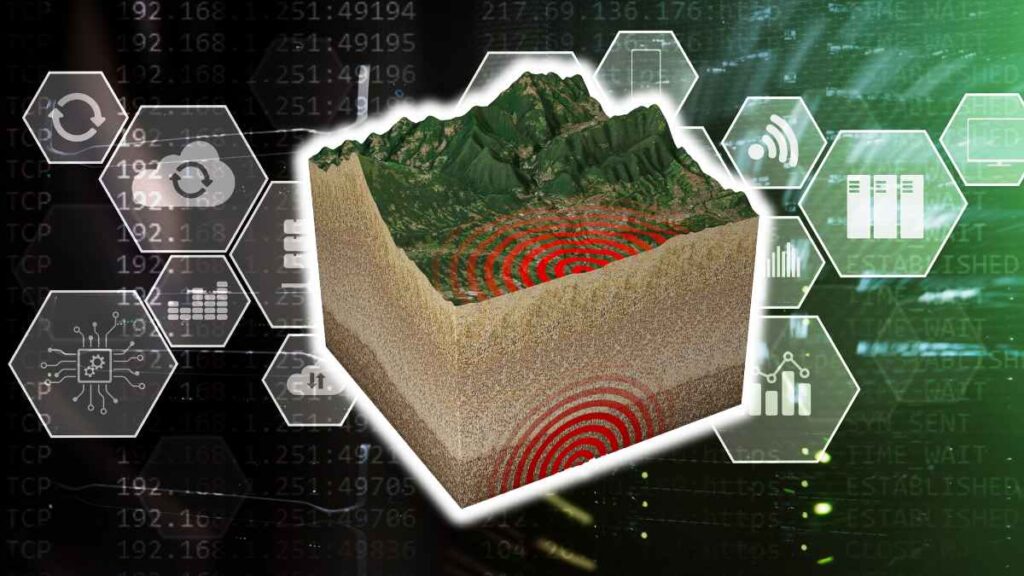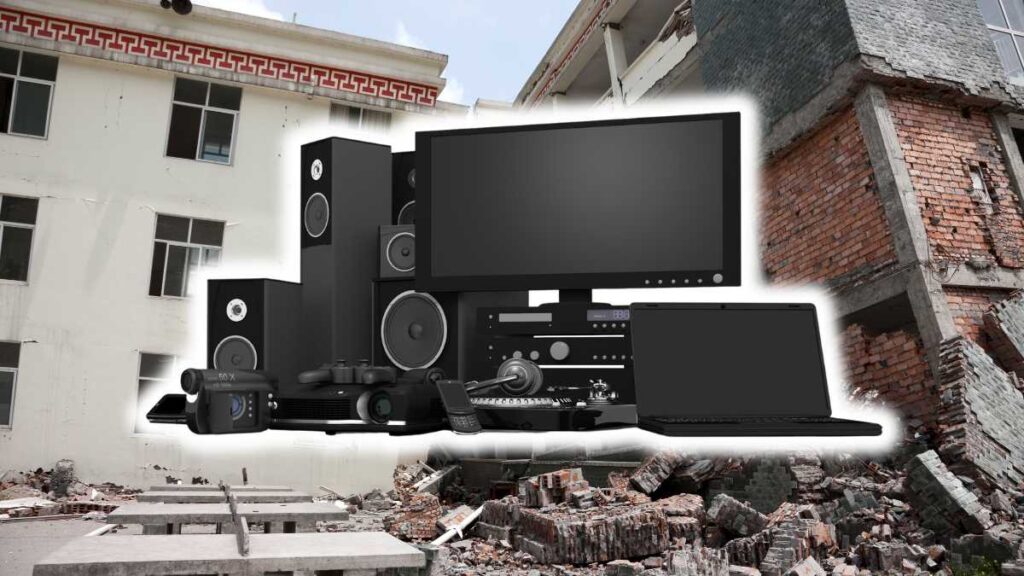Earthquakes can strike at any time and can cause significant damage to your house and personal belongings. Fortunately, there are 4 practical and essential preparations to damage-proof your house against earthquakes.
In summary, here are the 4 practical and essential preparations to damage-proof your house against earthquakes:
As homeowners, we worry about how earthquakes can cause damage to our houses. There are also concerns about physical injury for our family due to house structure damage due to earthquakes.
According to data from OurWorldInData.org, Earthquakes cause, on average, 19.5 billion USD in damages annually from 1980 to 2022. The minimum annual damage recorded was 56.9 billion USD from the year 1982. The maximum yearly documented damage was 230.3 billion USD from 2011 when Japan’s great earthquake and tsunami happened. Earthquake damage can indeed be costly.
Below are more details of the 4 practical and essential preparations to damage-proof your house against earthquakes.
Contents
Toggle1. Check Your Home’s Foundation and Structure
Checking your home’s foundation and structure is essential in securing your house against an earthquake. The foundation and structure of your home are critical in keeping it safe during an earthquake. You should inspect your foundation for cracks, settling, or other damage. Hire a professional to repair any issues and ensure the foundation is properly secured to the rest of your home. If your home has a crawl space, ensure it is adequately ventilated and debris-free.
Here are some further details on what to look for:
Inspect the Foundation
Your home’s foundation is the most critical component of its structural integrity. It is the base on which your home sits, and any damage to the foundation can cause significant problems during an earthquake. Look for cracks or settling in the foundation, which can signify structural damage. If you notice any issues, contact a foundation repair specialist to evaluate and fix the problem.
Here are some steps to follow when inspecting the foundation of your home:
Look for Cracks: Check the foundation walls, particularly around windows, doors, and corners. Horizontal cracks are particularly concerning as they can indicate foundation movement or settlement. If you notice any damages, mark them with a pencil and measure them to monitor if they continue to grow over time.
Check for Settling: Uneven settling can cause cracks in the foundation, so it’s essential to look for any signs of settling around the perimeter of your home. Look for gaps between the foundation and the surrounding soil, particularly around the corners of your home. Use a level to check the slope of your foundation, and look for any signs of uneven settlings, such as gaps, cracks, or sloping floors.
Evaluate the Foundation Anchors: Your foundation anchors secure the foundation to the surrounding soil, so checking for any signs of damage or weakness is essential. Look for any missing, rusted, or corroded anchors, and ensure they are correctly attached to the foundation and the soil. If you notice any issues with the anchors, contact a professional foundation contractor to evaluate and repair them.
Inspect the Concrete: Look for any signs of damage or deterioration in the concrete foundation, such as spalling (chipping or flaking), cracks, or discoloration. Check for any areas where the concrete is exposed, which can weaken the foundation. If you notice any issues with the concrete, contact a professional contractor to evaluate and repair the damage.
Check the Walls
Check the walls of your home for any cracks or signs of settling. If you notice any gaps in your walls, especially near windows and doors, it could be a sign that the foundation has shifted. This can be a serious issue, as it can compromise the structural integrity of your home during an earthquake.
Check the Roof
Your home’s roof is another critical component that needs to be inspected for earthquake safety. Make sure your roof is adequately secured to the rest of your home, and check for any signs of damage or weakness. If your roof needs repairs, getting them fixed as soon as possible is important to minimize the risk of damage during an earthquake.
Evaluate the Chimney
The chimney is another area of concern during an earthquake. Ensure your chimney is properly secured to your roof, and check for any signs of damage or cracks. If you have an older brick chimney, it may be more susceptible to damage during an earthquake. Consider hiring a professional to evaluate your chimney and recommend any necessary repairs.
Look for Signs of Moisture
Moisture can weaken your home’s foundation, making it more susceptible to damage during an earthquake. Look for any signs of moisture, such as water stains or mold, and address the issue immediately. Consider installing a vapor barrier or a French drain to keep water away from your home’s foundation.
READE MORE: 10 things not to do during an earthquake if you stay in a high-rise building like a condominium
2. Secure Heavy Furniture and Appliances
Heavy furniture and appliances, such as bookshelves, dressers, refrigerators, and televisions, can be dangerous during an earthquake. You should secure these items to the wall with straps or brackets to prevent them from falling over. Use putty or other adhesive to secure smaller items, such as picture frames and vases, to prevent them from moving or slipping.
Here are some further details on how to do it:
Anchor Furniture to the Wall
Tall and heavy furniture such as bookshelves, dressers, and cabinets can easily tip over during an earthquake, potentially causing injury or damage. Anchor them securely to the wall using L-brackets or other furniture anchors. Make sure to use appropriate hardware and follow the manufacturer’s instructions.
Strap Appliances to the Wall or Floor
Large appliances such as refrigerators, water heaters, and washing machines can also move during an earthquake, causing damage or injury. Use appliance straps or a specially designed safety brace to secure them to the wall or floor. Make sure to follow the manufacturer’s instructions for installation.
Secure Electronics
If improperly secured, TVs, computers, and other electronics can also be damaged during an earthquake. Use Velcro or different fasteners to attach them to surfaces or specially designed anti-tip straps for TVs. Keep cables and cords organized and out of the way to prevent tripping hazards.
Secure Loose Items
Loose items such as lamps, vases, and picture frames can become dangerous projectiles during an earthquake. Secure them to a surface or put them away in a secure location. Consider using museum putty or other types of adhesives to keep items from moving around.
Don’t Overload Shelves or Cabinets
Avoid overloading shelves or cabinets with heavy items, as this can make them more susceptible to tipping over during an earthquake. Keep heavy objects on lower shelves and use bookends or other supports to prevent them from falling over.
3. Install Safety Film on Windows
Windows are one of the most vulnerable areas of your home during an earthquake. Installing safety film on your windows can help prevent them from shattering, protecting your home from flying debris and preventing injuries. Safety film can be purchased online or at most home improvement stores.
Here are some more details about how to install safety film on windows:
Choose the Right Type of Film: Safety film comes in different types and thicknesses, so choosing the suitable film for your windows is essential. Look for a film specifically designed for earthquake protection that meets your area’s safety standards.
Clean the Windows
Before installing the film, make sure the windows are clean and debris-free. Use a mild detergent and water to clean the windows, then dry them thoroughly.
Measure and Cut the Film: Measure the window’s dimensions and cut the film to size, leaving an additional inch on all sides. Use a sharp utility knife or scissors, and be careful not to damage the film.
Apply the Film
Spray a thin layer of water on the window and then apply the film to the glass. Use a squeegee or credit card to remove air bubbles and smooth the film. Be sure to keep the film taut and avoid stretching it.
Trim the Film
Once the film is applied, use the utility knife or scissors to trim the excess film from the edges of the window.
Allow the Film to Cure
Depending on the type of film, it may take a few days for it to cure and adhere to the glass fully. Follow the manufacturer’s instructions for curing time and avoid touching or cleaning the film during this time.
4. Retrofit Your Home
Retrofitting your home involves adding additional support to your home’s structure, making it stronger and more resistant to earthquakes. You should hire a professional to evaluate your home and determine what retrofitting is needed. Some common types of retrofitting include bolting your home’s foundation to the frame, installing braces in your crawl space or attic, and adding shear walls to your home. These may require additional costs and may not be practical for all homeowners, but this is something important that should be considered as well.
Here are some more details about how to retrofit your home:
Consult a Professional
Retrofitting your home can be a complex process, and consulting with a licensed contractor or structural engineer with experience with earthquake retrofits is essential. They can evaluate your home and recommend the best retrofitting options.
Strengthen the Foundation
A strong foundation is essential for earthquake resistance. One common retrofitting technique is reinforcing the foundation with steel plates or concrete to increase strength and stability.
Install Shear Walls
Shear walls are vertical walls designed to resist lateral forces, such as those caused by earthquakes. They can be installed on the house’s interior or exterior and made from materials such as plywood, steel, or concrete.
Anchor the House to the Foundation
Anchoring the house to the foundation can help prevent the house from sliding or shifting during an earthquake. This can be done using anchor bolts or other types of fasteners.
Install Bracing and Cross-Bracing
Bracing and cross-bracing can help reinforce the house’s structural components, such as walls and beams, to make them more earthquake-resistant. Bracing is a diagonal support system that helps to distribute forces evenly, while cross-bracing provides additional lateral support.
Upgrade Nonstructural Components
Nonstructural components, such as HVAC systems, plumbing, and electrical wiring, can also be retrofitted to make them more earthquake-resistant. This may involve installing flexible connectors or seismic shut-off valves.
READ MORE:
Conclusion
Earthquakes can cause significant damage to homes and personal belongings, leading to costly repairs and injuries. Homeowners can take steps to secure their houses against earthquakes, including inspecting the foundation and structure, checking the walls, roof, and chimney for damage, and securing heavy furniture and appliances. Inspecting the foundation is critical in keeping the home safe during an earthquake, as it is the home’s base. Uneven settling, cracks, and water damage can cause significant problems, and homeowners should contact a professional to repair any damage. Securing heavy furniture and appliances can prevent injuries and damage during an earthquake.
Bibliography
Global damage costs from natural disasters, 1980 to 2022; Our World in Data; Link: https://ourworldindata.org/grapher/damage-costs-from-natural-disasters?tab=chart&country=~Earthquake
Prepare your house for an earthquake; California Earthquake Authority; Link: https://www.earthquakeauthority.com/Prepare-Your-House-Earthquake-Risk
How do I find the nearest fault to a property or specific location?; USGS; Link: https://www.usgs.gov/faqs/how-do-i-find-nearest-fault-property-or-specific-location




